Interior Health drinking water safety project
Access to clean, safe, reliable drinking water is a fundamental need and a basic human right, and is essential to the well-being of our communities.
In Canada, water is protected through the The Drinking Water Protection Act and the Drinking Water Protection Regulation. Keeping drinking water safe in B.C. is a shared responsibility between government and water system owners and operators. While legislation and regulation is applied and enforced by the regional health authorities and drinking water officers, water system owners and operators provide safe drinking water and notify the public and drinking water officers about water quality problems.
The Interior Health region is home to over 1,900 water suppliers ranging in size from small (less than 300 connections) to large (301 to 10,000 connections). On average, on any given day, 500 water suppliers are on a drinking water advisory in the Interior Health region, whether it be a water quality advisory, a boil water notice, a do not consume notice, or a do not use notice.
While the safety of drinking water is critically important to ensuring the health of communities, Interior Health identified a lack of public understanding about where the region’s water comes from, how water is treated, who treats it, and how it is delivered to people’s homes. This lack of understanding contributes to a lack of public support for water suppliers; particularly when it comes to suppliers increasing water rates, or seeking funding to make necessary infrastructure upgrades in order to bring their water systems into compliance with health protection standards.
In order to educate the public about the importance of safe drinking water, Interior Health hired Be the Change Group to develop and launch a long-term communications engagement strategy to accompany the release of the Office of the Medical Health Officer report into the status of drinking water within Interior Health. The communications engagement strategy would provide water suppliers/operators, municipalities, and Environmental Health Officers with materials and information to educate the public about their water supply, and empower municipalities and water suppliers to continue to engage with and inform their water users.
Since this initial engagement in 2017, our work with the Interior Health Drinking Water Program has included a comprehensive community engagement in advance of the 2017 Medical Health Officer Drinking Water Report, the development of educational videos, and the development and successful launch of the drinkingwaterforeveryone.ca microsite and Drinking Water Advisory Map, continued website support and development, and the roll-out of a communications strategy for promoting the map to regional districts and municipalities in the Interior Health region, as well as exploring ways to work with First Nations communities.
Sector
Services
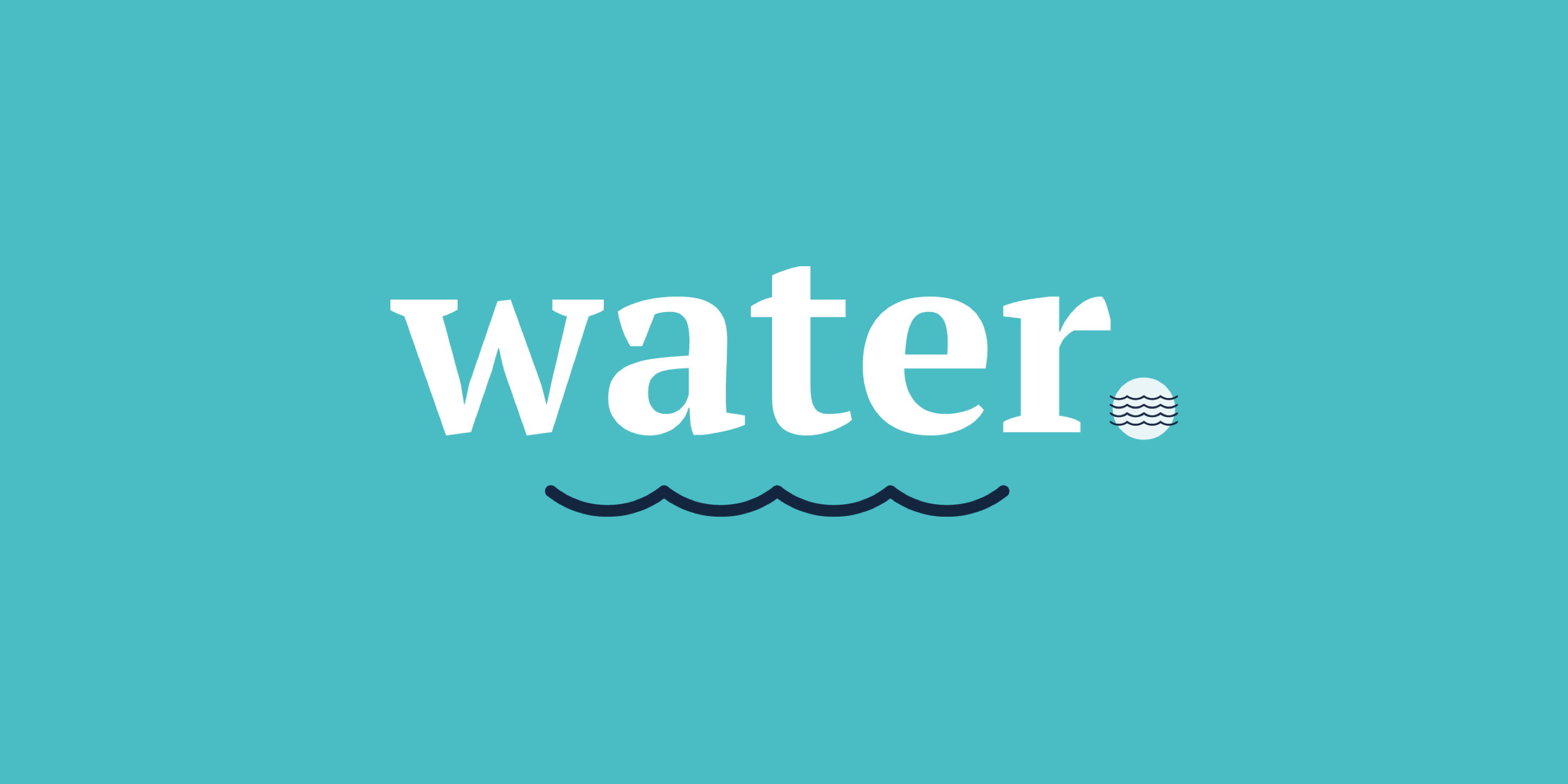
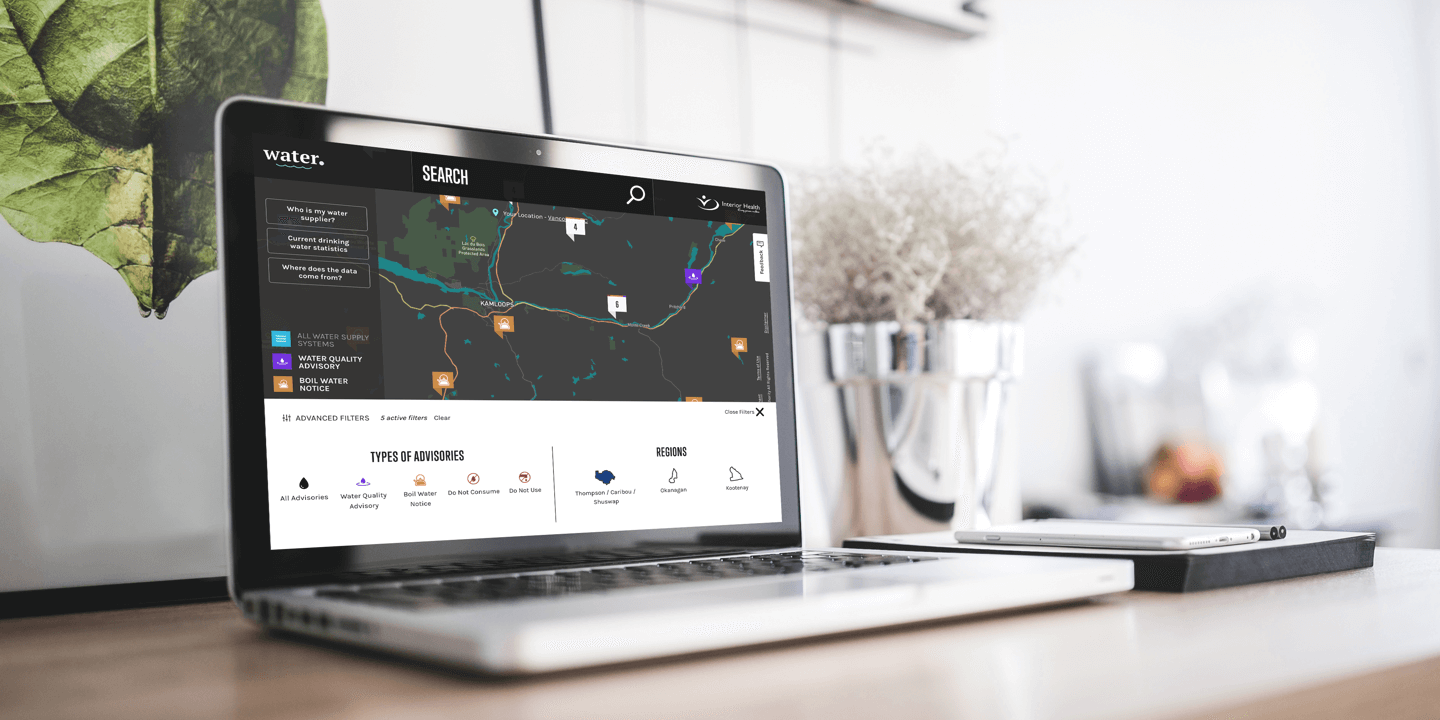
DISCOVERY
Based on the information gathered and analyzed in our discovery via the background and literature review, survey, key informant interviews, site visits, and focus group, we presented Interior Health with a designed, 118-page report. The report included recommendations for a communications strategy to advance knowledge, understanding, and community support of optimal and safe drinking water supply in the Interior Health region, and laid the foundation for the development of the drinkingwaterforeveryone.ca website.
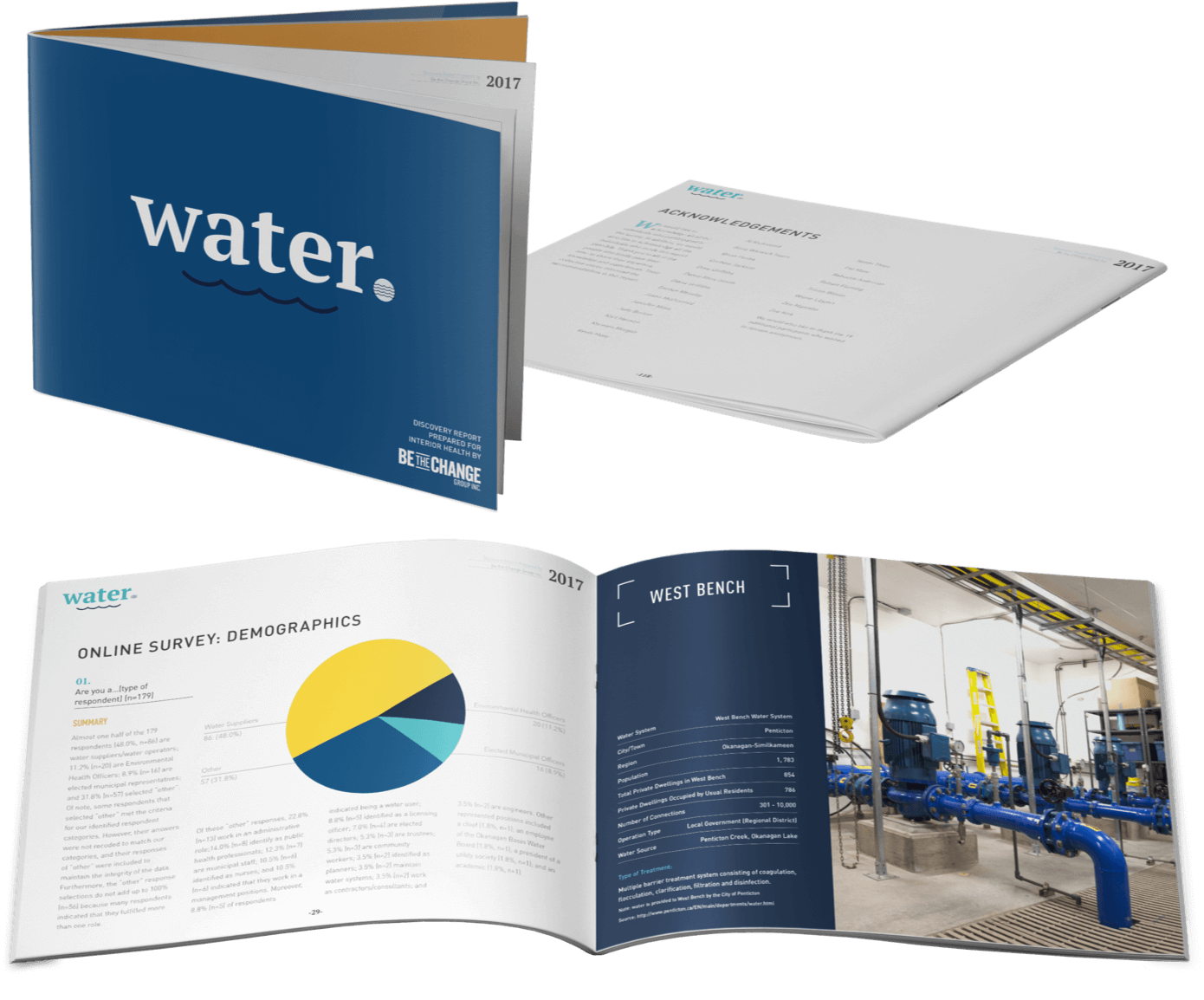
Our Solution
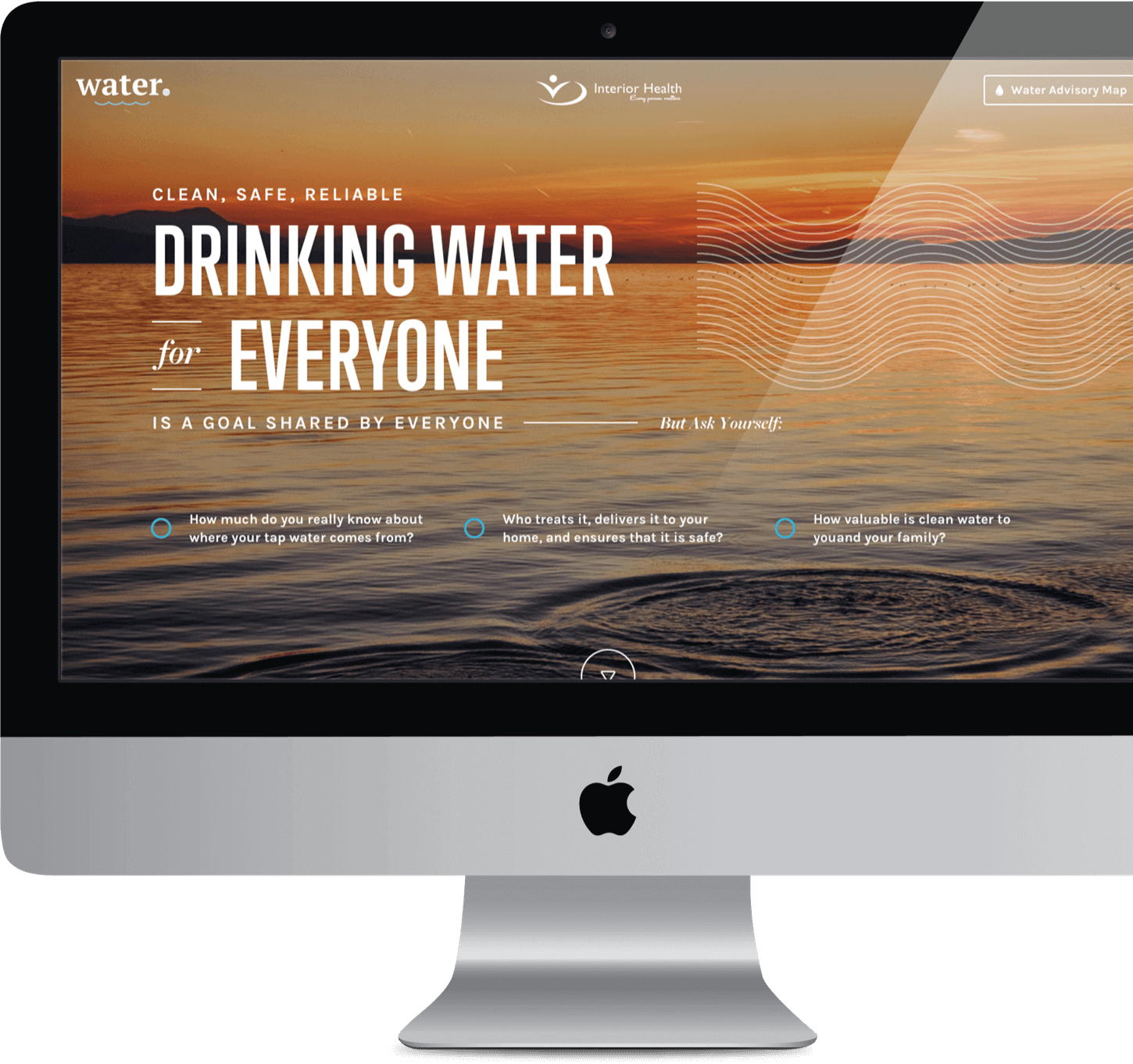
Our Solution
We worked with the IH Communications team to develop a communications plan for the roll-out of the campaign and microsite. The drinkingwaterforeveryone.ca website and educational videos were successfully released in tandem with the 2017 Medical Health Officer report on the status of drinking water in the Interior Health region and gained significant media coverage.
While this fostered conversation, raised awareness about safe drinking water in the Interior Health region, and engaged all stakeholders in the process, Interior Health re-engaged our team to continue to build on the successes to date by developing and carrying out a sustainable, consistent, and clear annual communications strategy and plan to promote the site and map.
In this strategy, we reached out to municipalities, regional districts, and First Nations stakeholders to continue the conversation and further disseminate the map. To date, 15 municipalities, and three regional districts in the Interior Health region have posted the advisory map on their websites, with this number continuing to grow. In addition, conversations regarding partnerships with First Nations communities continue to be explored. The roll-out of the communications plan also elicited feedback from website users, and this feedback has resulted in improvements to the website.
OUR SOLUTION
Based on a recommendation from our community engagement and a request by the Chief Medical Health Officer, we worked closely with the IH Water team to develop a one-of-a-kind, real-time, accessible, interactive drinking water map for use by the general public. The map was user-tested with the public across the Interior Health region, and updates were made based on user feedback.
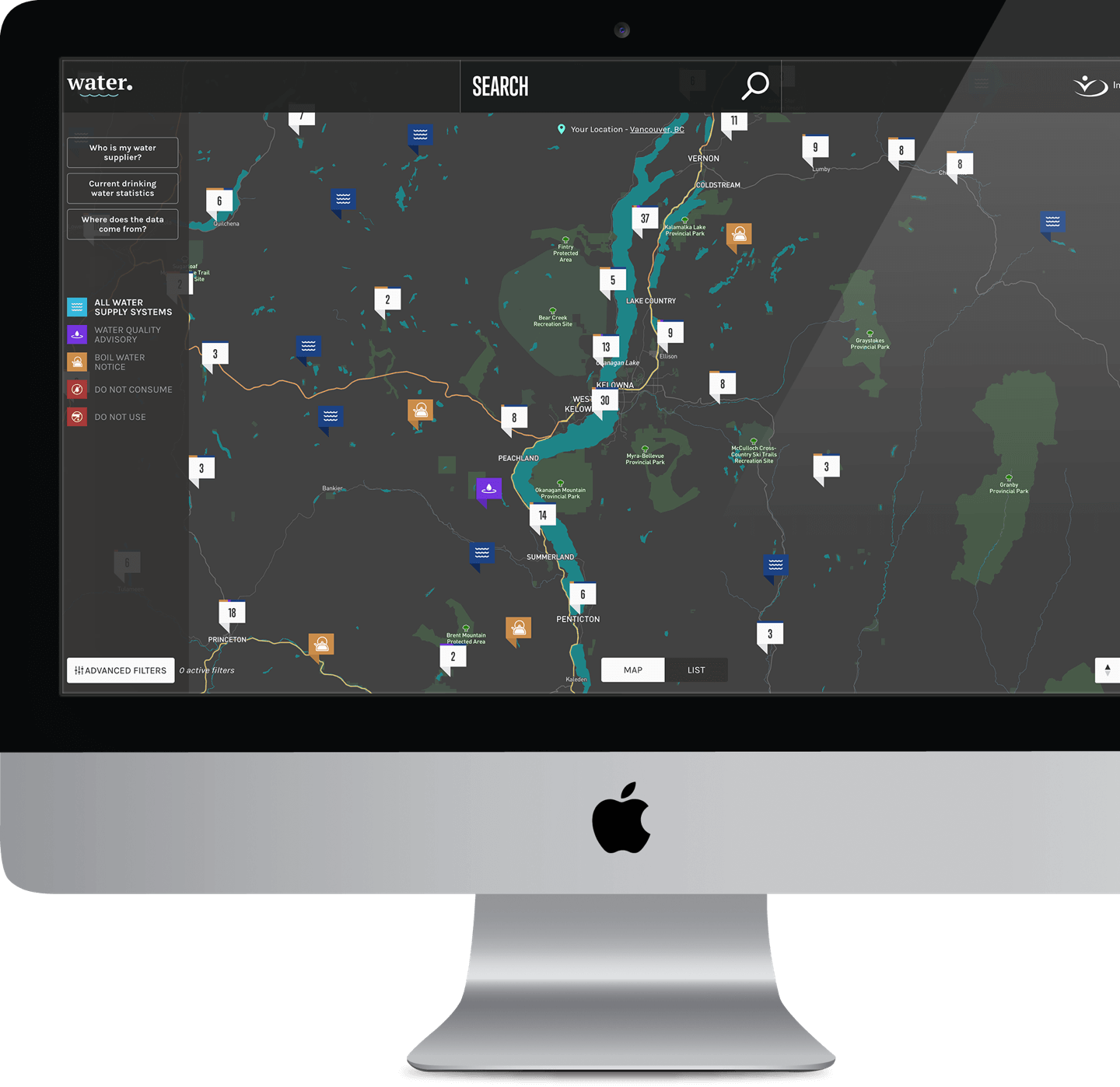
OUR SOLUTION
OUR SOLUTION
Recognizing the importance of clear, accurate, and accessible information, our research and copywriting team worked with the Interior Health Water team to create simplified definitions for the four types of water notices (water quality advisory, boil water notice, do not consume notice, and do not use notice), and created simplified explanations of reasons why a notice has been put in place.
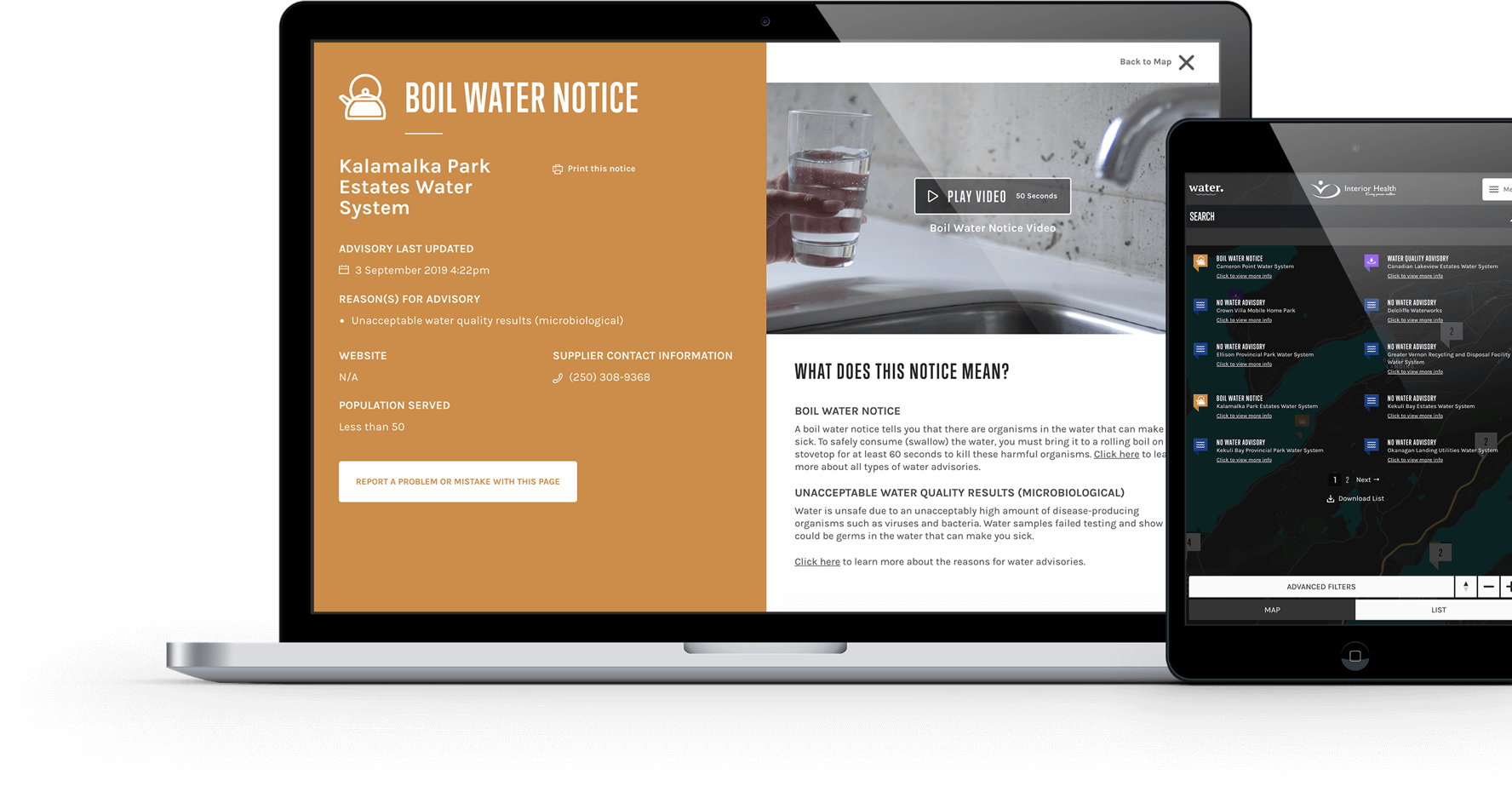
OUR SOLUTION
To design the map, our user-experience-focused designers researched and determined effective ways to display water safety information that is easy to navigate, intuitive, and easy to update by the client. We then designed the additional pages, map, icons for the four advisory types, and associated FAQ links such as the types of notices.
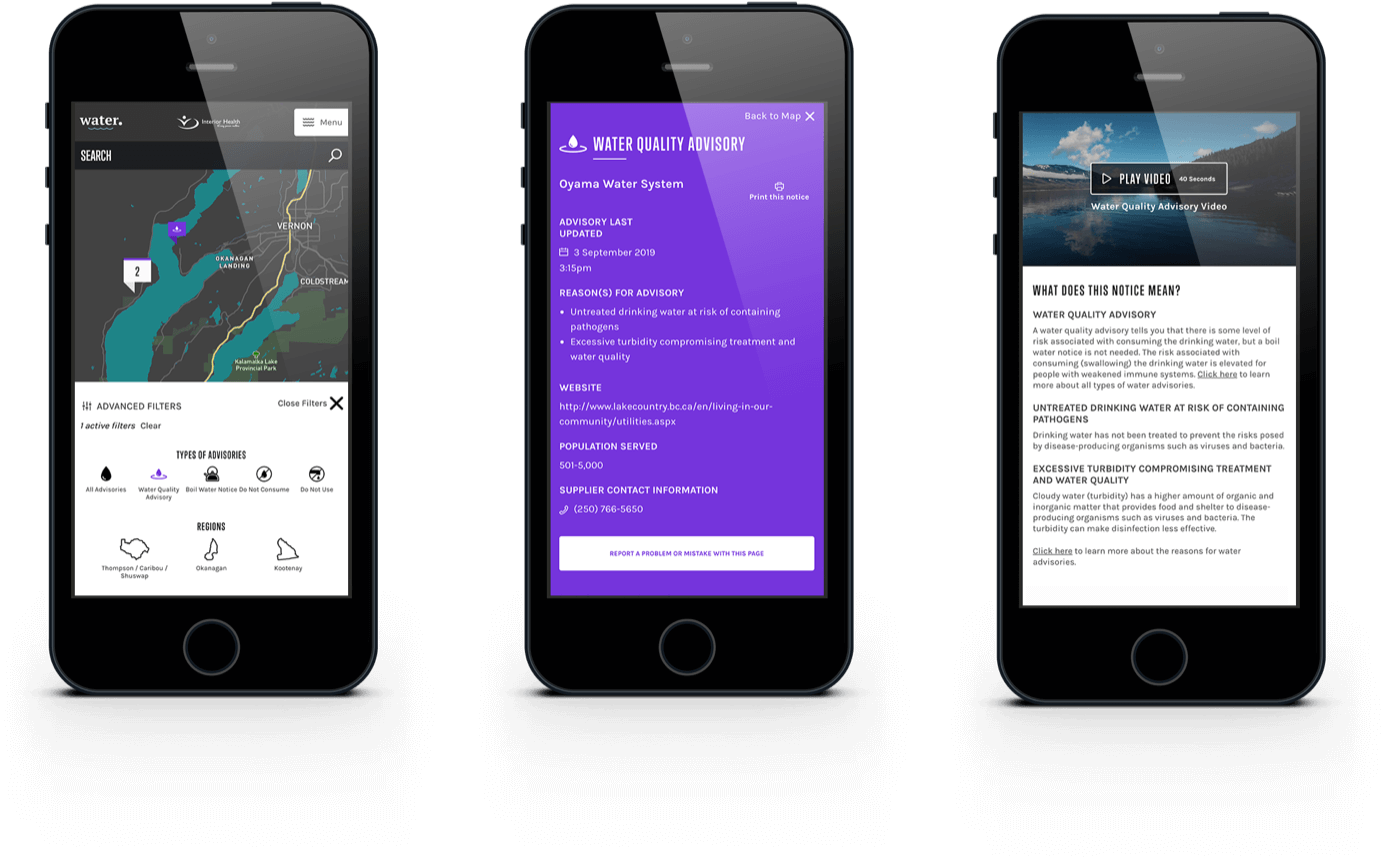
OUR SOLUTION
Once the first round of designs was finalized, our developers coded the website on a secured hosting account, integrating water status data from the Interior Health Hedgehog database through a third-party server in order to maintain data privacy requirements.

our solution
The advisory map was tested with the general public in Invermere, Kelowna, Penticton, and Kamloops via in-person, focus group user testing. User testing helped identify actionable updates for the map including lightening up the designs; creating more contrast between roads, land, and bodies of water; including more detail such as buildings, parks, and structures; and, in general, simplifying the designs by eliminating extraneous information that takes away from the main message and purpose of the map. In addition, resources including the videos and explanations of advisory types were also user-tested with the public for clarity. Once changes based on user feedback were incorporated, the advisory map was launched.
Partnership
Recognizing that the launch of any site or feature is not the end of the project, but rather the beginning: our team continues to provide maintenance to the drinkingwaterforeveryone.ca website and advisory map. Maintenance includes the development and testing of new features based on user feedback, quality assurance processes, and development of new protocols for ensuring accurate display of advisory data.
